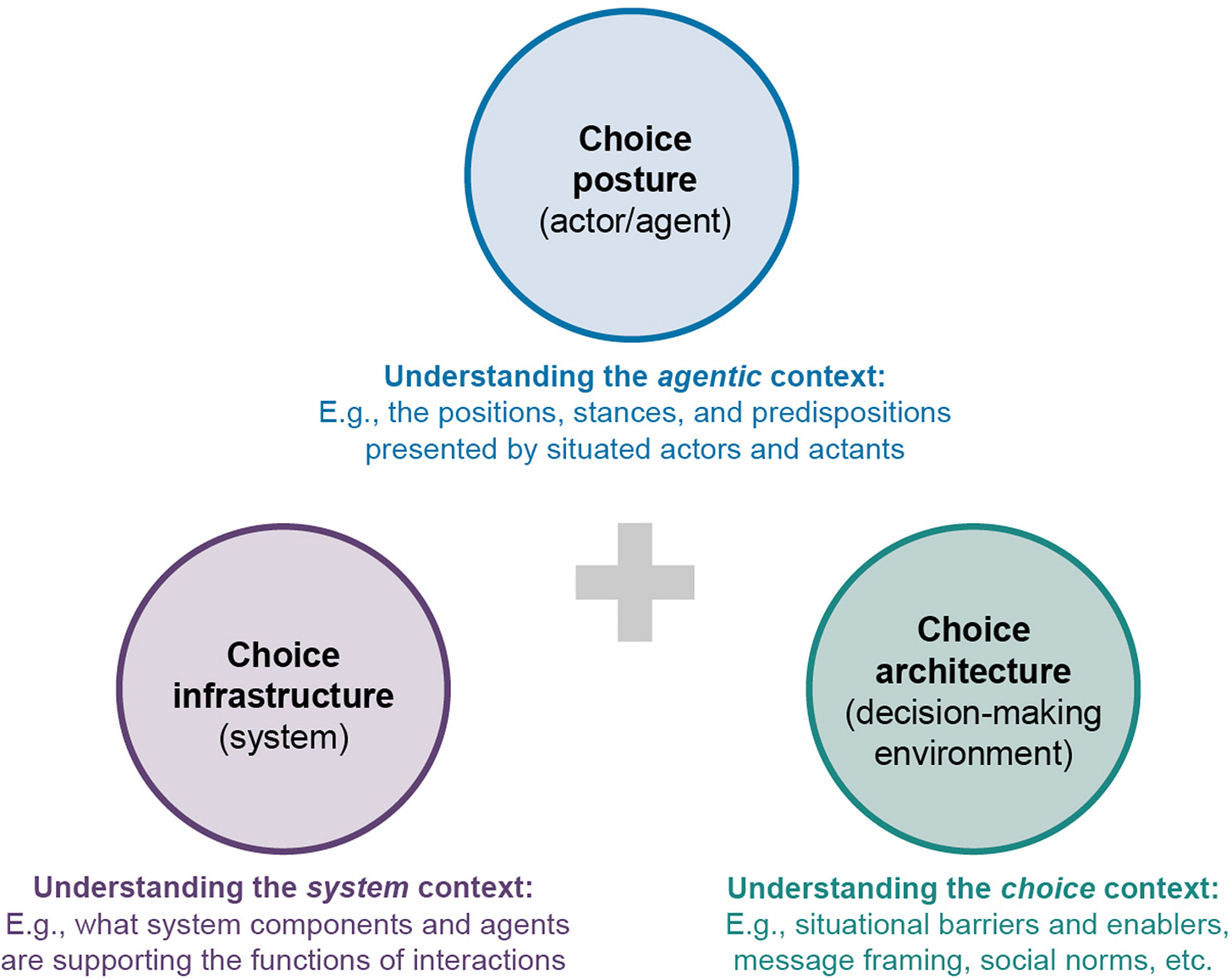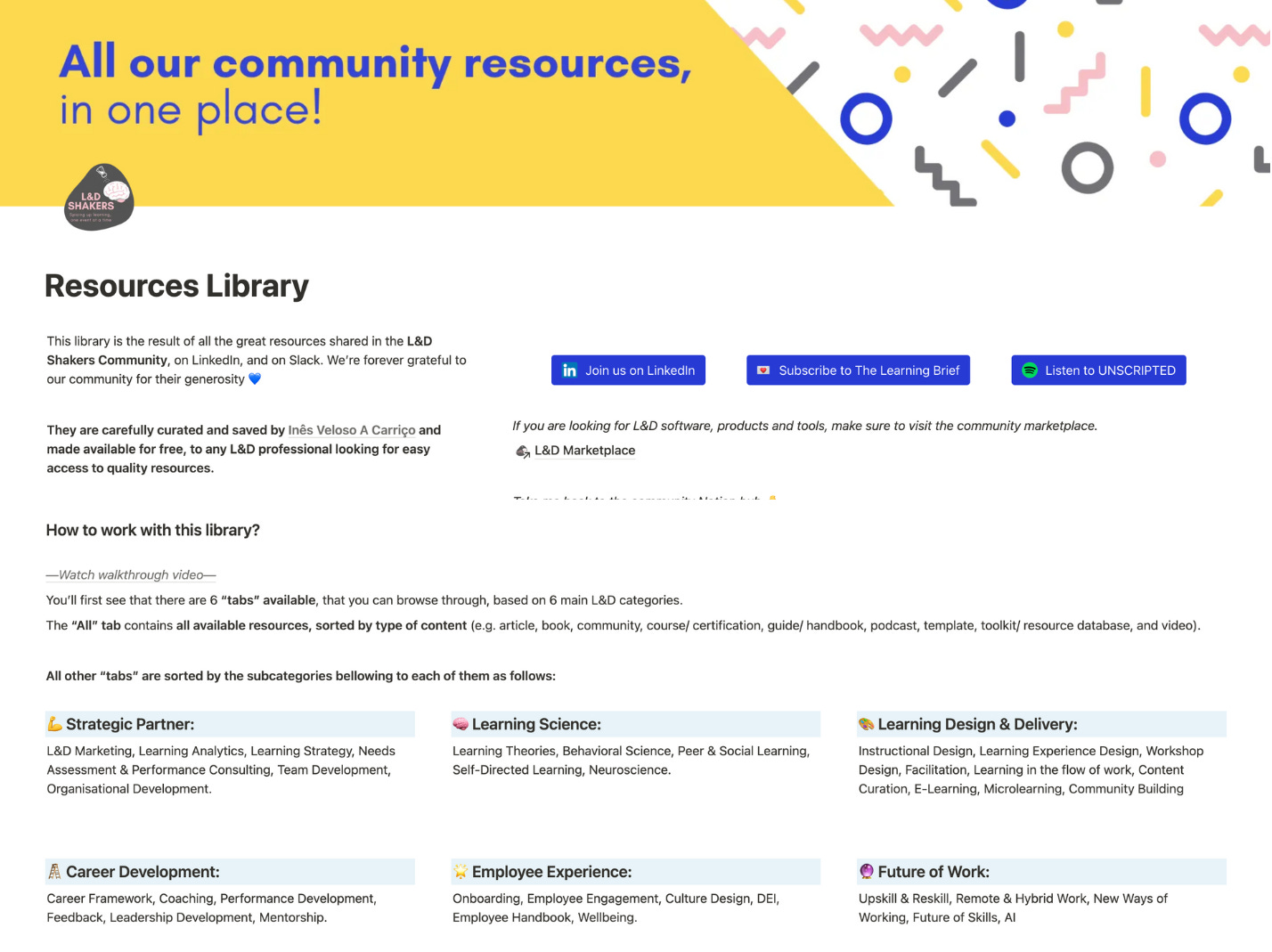TLB #55🧠 From content to context: A behavioural design lens for L&D
A bi-weekly inside scoop on all the hottest events, juicy discussions, and oh-so-many other exciting things happening in our dynamic L&D community. 🧡
Hello Shaker,
Here’s all that you’ll experience in today’s issue:
💡Learning Bites: Applying the Choice Triad to L&D: Learning through a behavioral lens
🗓️ Community Calendar: Be part of local hub meet-ups, book club and other events happening in the Shakers Community
🖌️ Community Creations: Tune into Unscripted for the latest episode and explore L&D Shakers Resource Library
🔖 Resource Reel: A collection of resources on Teams, AI, Feedback, Learning and , and many more.
Learning Bites 💡
What if the real reason your learning program didn’t stick had nothing to do with the content, but everything to do with the system around it?
That’s the kind of question behavioural designer Ruth Schmidt and her co-authors Zeya Chen and Veronica Paz Soldan invite us to ask in their research:
“Choice Posture, Architecture, and Infrastructure: Systemic Behavioural Design for Public Health Policy”
Although developed for public health, the ideas resonate deeply with what many of us face in L&D when we try to influence workplace behaviour through learning, but run into invisible walls.
Let’s explore what the research says and how we can apply it.
What the study proposes
The authors present a “Choice Triad”—a framework for designing behaviorally informed systems that are more than just well-framed nudges.

Here's what they mean:
1️⃣ Choice Posture - The mindsets or readiness people bring into a behavioural moment. Are people willing or able to act?
2️⃣ Choice Architecture - How options are framed, sequenced, or made easier. Are we making the right thing the easy thing?
3️⃣ Choice Infrastructure - Systems, policies, and norms that enable or block behaviours. Do the systems support or undermine the behaviour?
Their thesis: To make behaviours stick, especially in complex settings like health or organisations, we must address all three. Nudges alone don’t go far if mindsets are misaligned or the system works against change.
So, what does this mean for L&D?
Let’s reinterpret the triad for workplace learning:

1️⃣ Choice Posture
The mindsets learners bring into the learning moment
Often, we design for behaviour change, assuming people are motivated. But posture reminds us to pause and ask:
Are people ready and willing to learn or change?
Questions to consider:
What beliefs or baggage might learners carry into this learning moment?
Have they been burned by irrelevant or overly generic programs before?
Do they feel safe to try something new without fear of failure?
What L&D can do:
Start with mindset mapping
Use learner personas to design for posture
Design for re-entry. Allow reflection time, build early success moments to shift posture
2️⃣ Choice Architecture
How learning is structured to support decision-making and action
We’re familiar with this one. Nudges, scaffolds, simulations, and spaced repetition all belong here. But the real test is whether our design nudges people to try new behaviour at the right moment, not just during the workshop.
Are we making the desired behavior frictionless and inviting?
Questions to consider:
Are choices framed in the learning?
Do learners see the consequences of different decisions?
Is the default behaviour easy to act on?
What L&D can do:
Use simulations, job aids, and decision trees
Make desired behaviours the “default”
Structure reflection points right after real-world application moments
3️⃣ Choice Infrastructure
The system around the learner that either supports or erodes change
This is the silent killer of many learning initiatives.
You’ve nudged the learner. They’re motivated. But now they go back to their team, where there’s no time to apply what they learned, their manager doesn’t support the new approach, or the appraisal system still rewards the old behaviour
Is the organizational environment enabling the change we’re designing for?
Questions to consider:
Are performance systems aligned with the behaviour we’re teaching?
Do managers reinforce or ignore the learning?
Is there follow-up or feedback after the session?
What L&D can do:
Partner with HR to align performance and learning goals
Design 30/60/90-day check-ins with managers
Equip team leads to be learning champions, not just bystanders
We often ask: “How do we make learning more effective?”
But this research flips the question:
What’s the posture, architecture, and infrastructure surrounding the learner, before, during, and after the learning experience?
When we start asking that, we shift from delivering isolated learning events to designing systems for learning.
This behavioural design lens helps L&D professionals move beyond content creation toward becoming experience architects, designing with people, context, and complexity in mind.
Coming Up Next
Community Calendar 🗓️
Growth. Connection. A-ha moments.
Discover what’s coming up—from thoughtful conversations in local hubs to community gatherings that stretch your thinking.
All curated by your L&D Shakers crew.
Community Creations 🖌️
🎧 Another episode just landed on L&D Frameworks: Applied with Saad Bin Tariq.
He shares how he used Human Performance Improvement (HPI) and adult learning principles to support managers and help teams truly thrive.
It’s honest, practical, and packed with insights.
Built with the collective wisdom of our generous community from Slack threads to LinkedIn gems, this library is a go-to hub for high-quality, curated L&D resources.
A huge shoutout to Inês Veloso A Carriço, who’s been carefully collecting and organizing it all so you don’t have to. 💙
Free and open to all L&D professionals.
Dive in, explore, and find what you need—faster.
Cool Stuff You Don’t Wanna Miss Out
State of Teams 2025 – How top teams work smarter - Atlassian’s latest report uncovers how high-performing teams are tackling one of today’s biggest problems: information overload.
Squiggly Careers x AI: A 5-Day Career Sprint - Feeling too busy to invest in your career? The Squiggly Careers team is here to help—with a bite-sized 5-day sprint exploring how AI tools can boost your strengths, values, confidence, networking, and future possibilities.
How AI Is Redefining Managerial Roles - This HBR article breaks down how AI can streamline middle management, flatten hierarchies, and reimagine coordination. But the big question remains: What should you automate and for whom does it create value?
4 Strategies to Help New Leaders Give Feedback - New to leadership? This guide helps you navigate one of the toughest early challenges: giving feedback. With a focus on timing, empathy, and trust, it’s a practical playbook to build credibility and accountability from day one.
New Research: The Link Between Learning and Innovation - Why do some innovation teams thrive while others stall—even when effort levels are the same? New research from Amy Edmondson & team highlights four team learning modes that drive innovation: Reflexive, Experimental, Contextual and, Vicarious.
Scenario Planning Amid Radical Uncertainty - When risk models break down, scenario planning steps up. This timely article explores how leaders can prepare for the unthinkable, not by predicting it, but by imagining beyond it. A fresh lens for navigating ambiguity without falling into fear or false certainty.
〜See you soon
Till then, keep spicing up your learning! 🧠🧂
Sejaal




